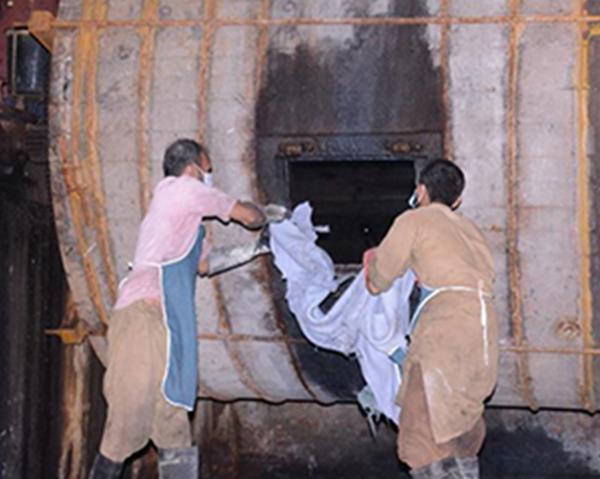Tanning in Iran is not merely a technical step in the leather production process but also part of the country’s ancient heritage and centuries-old craftsmanship. This stage marks the final phase of the Beam House operations and the first true step in transforming raw hides into durable, resistant leather. In Iranian tanneries and workshops, tanning is carried out through a blend of modern technologies and traditional skills, producing leather that is unrivaled in both quality and durability as well as aesthetics in domestic and international markets.
The purpose of tanning is to stabilize the protein structure of the hide (collagen fibers) and to strengthen it against destructive factors such as bacterial decay, shrinkage, and moisture damage. Untreated raw hides will spoil and decompose within a short time. During tanning, tanning agents penetrate deeply into the hide structure, bonding with the collagen fibers and locking them into place, creating a stable, flexible material resistant to environmental conditions.
In Iran, tanning is mainly performed in large rotary drums made of wood or stainless steel, which allow even penetration of tanning agents throughout the hide. The choice of tanning method depends on the intended final product:
- Vegetable Tanning:
In cities such as Tabriz, Hamedan, and Varamin, the use of natural tannins derived from tree barks such as oak and sumac is still common. This method produces leather with a denser structure, high durability, and warm natural tones. Due to its eco-friendly nature, it holds significant value in export markets, particularly in Europe. - Chrome Tanning:
In industrial factories in Mashhad, Tehran, and Tabriz, tanning with chromium salts is widely practiced because of its speed, suitability for mass production, and the creation of soft, flexible leather. This method is primarily used for manufacturing bags, shoes, and modern leather garments. - Combination Tanning:
Many Iranian producers employ a hybrid method, combining vegetable and chrome tanning to achieve products with the advantages of both—durability and strength from vegetable tanning, along with softness and flexibility from chrome tanning.
The choice of tanning method and tanning agents in Iran depends not only on the type of hide (cow, goat, sheep, or buffalo) but also on climatic conditions, the final intended use of the leather, and even special requests from international clients. After tanning, the hide is transformed into stable leather capable of resisting abrasion, temperature fluctuations, and moisture. This stage also forms the foundation for subsequent finishing operations such as dyeing, drying, surface finishing, and the application of protective coatings—ensuring that the final product meets international standards and market preferences.
Key characteristics of tanning in Iran’s leather industry:
- Integration of traditional craftsmanship and modern technology in tanning processes
- Use of native plant-based materials such as sumac and oak bark for natural tanning
- Application of industrial chrome tanning methods for rapid, large-scale production
- Employment of combination tanning for premium export-quality leather
- Careful selection of tanning methods based on hide type, climatic conditions, and target markets
- Preparation of leather for subsequent finishing operations such as dyeing and surface treatment


No comments yet.